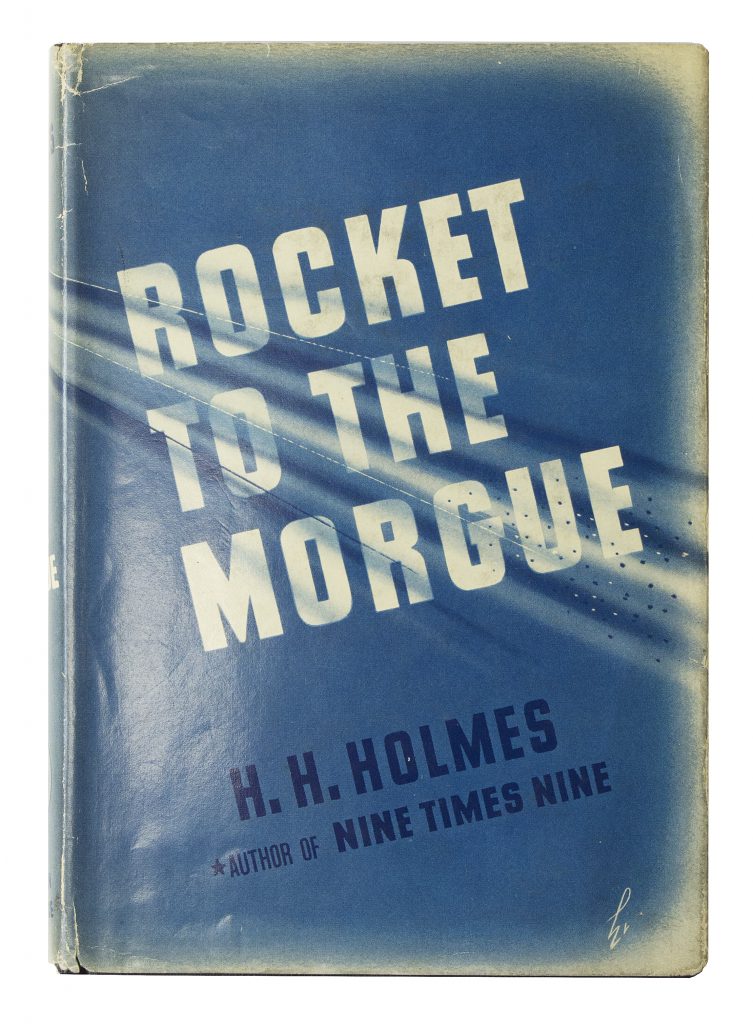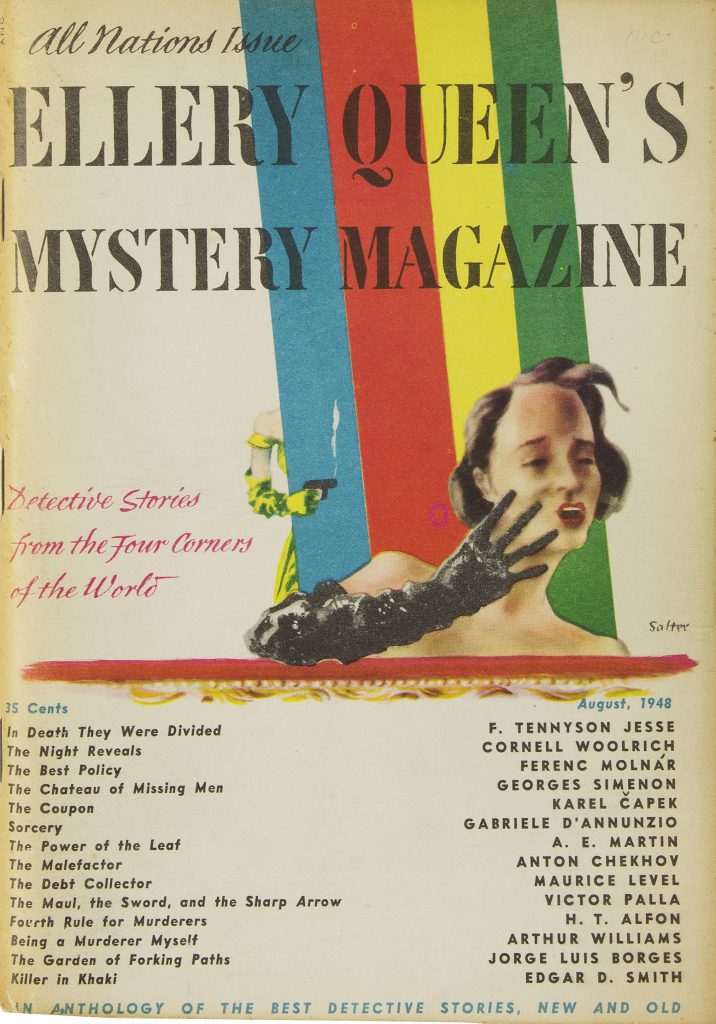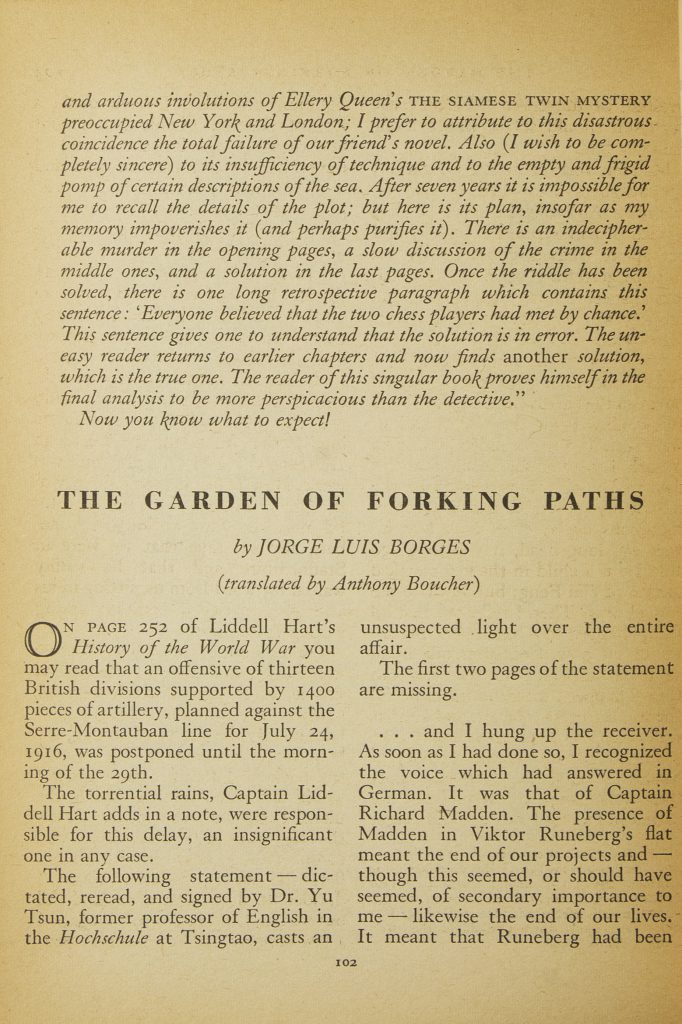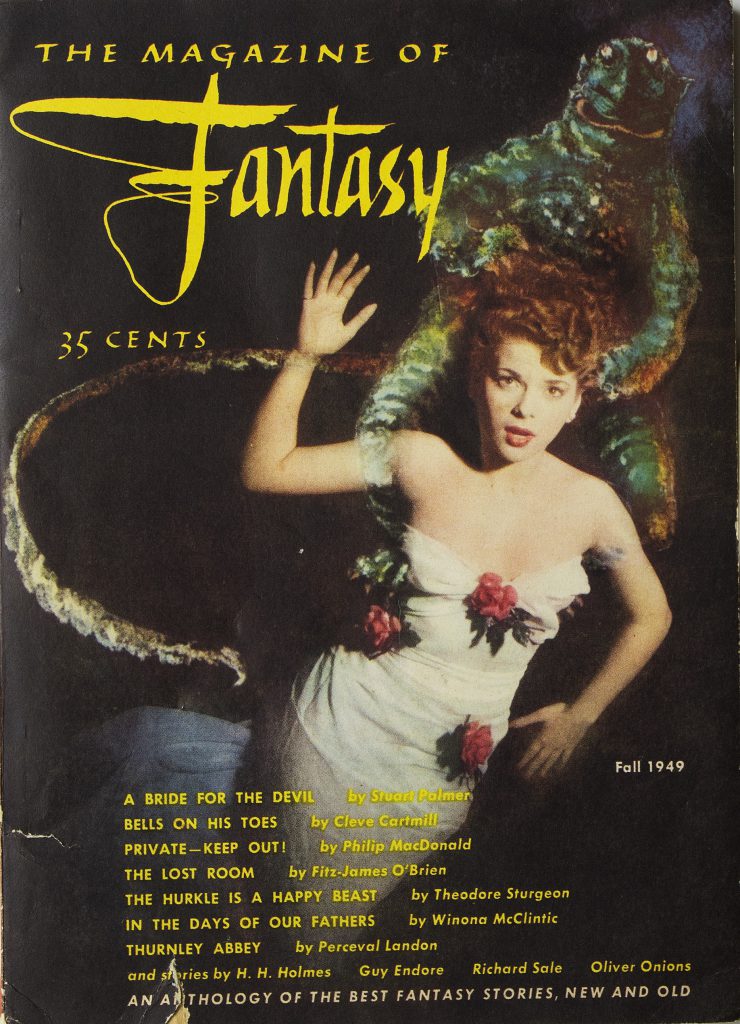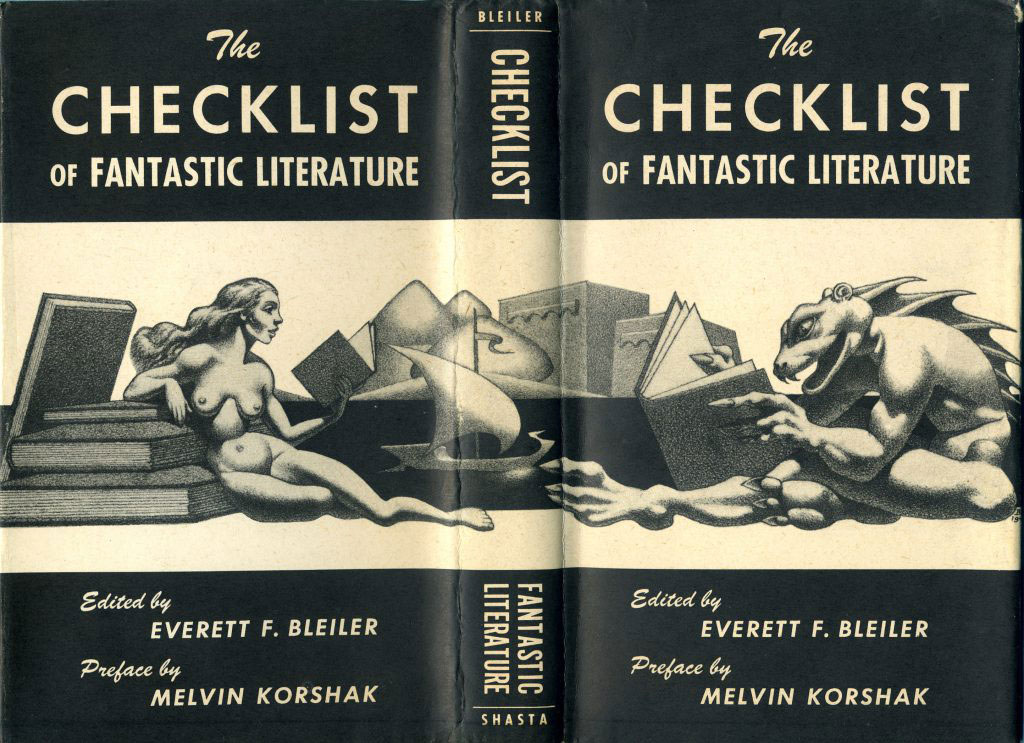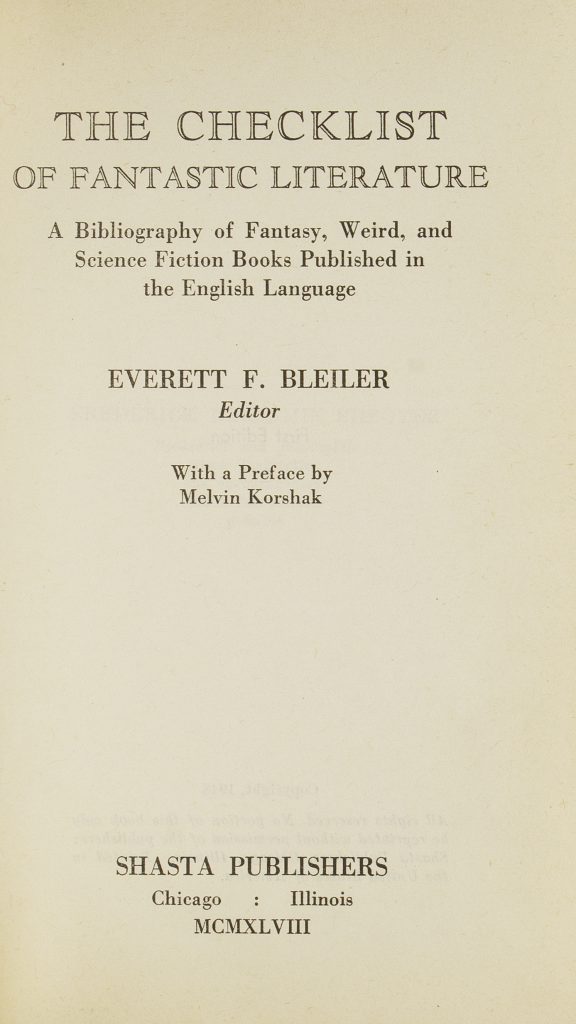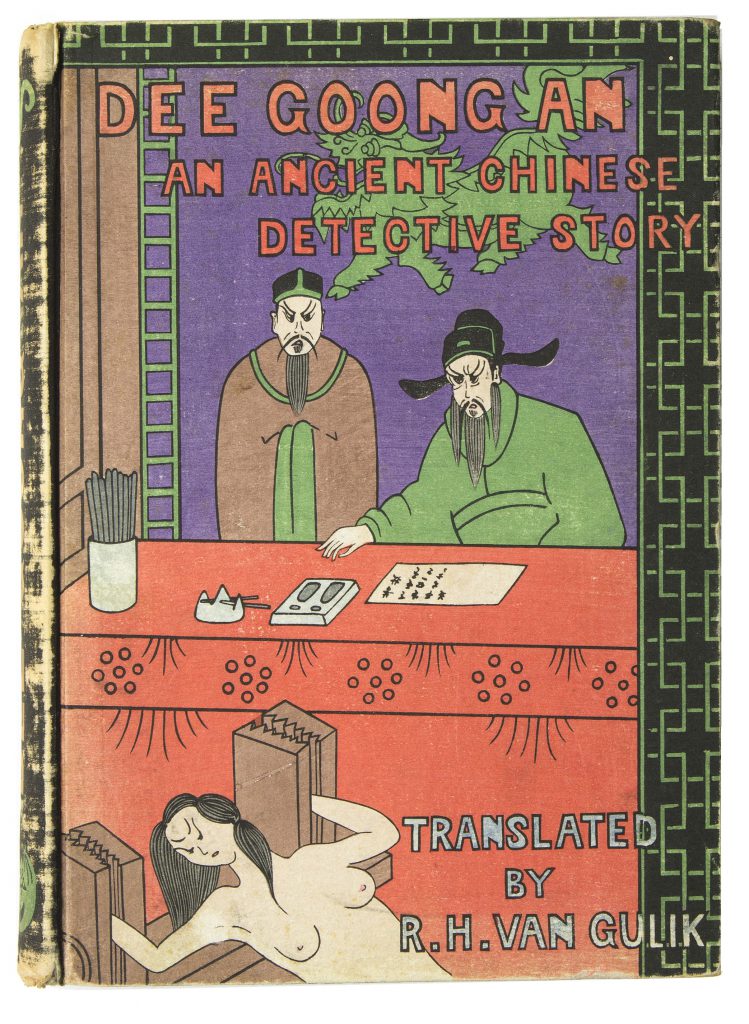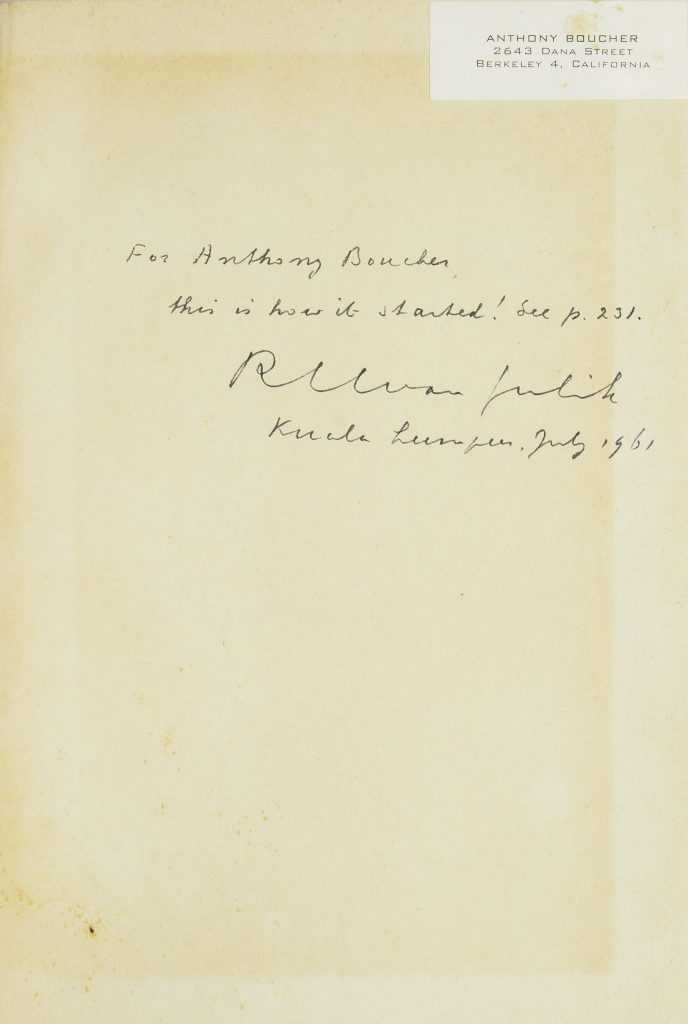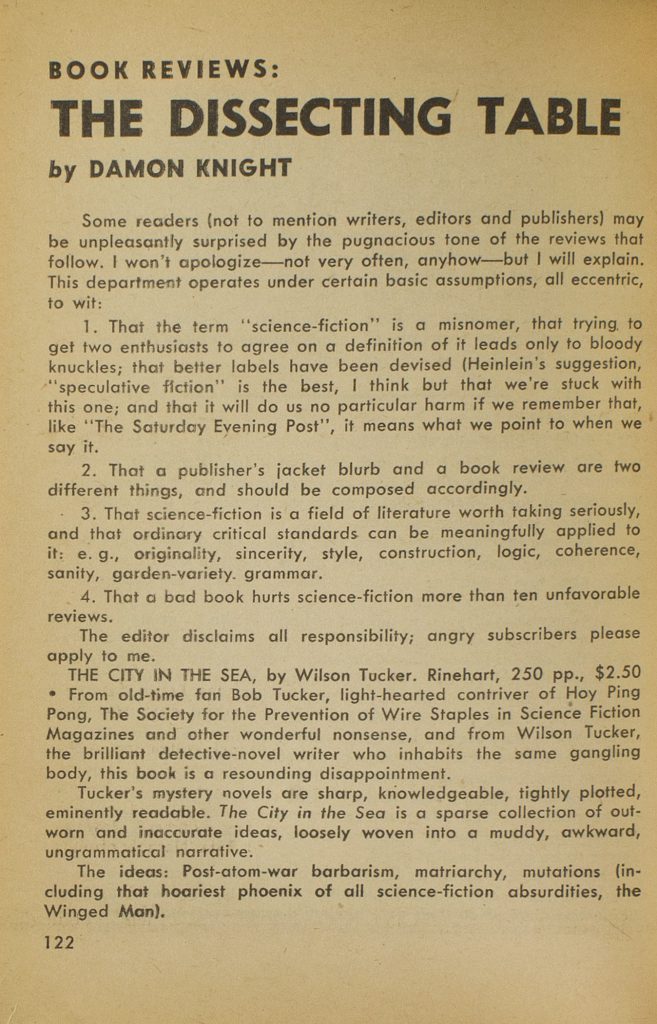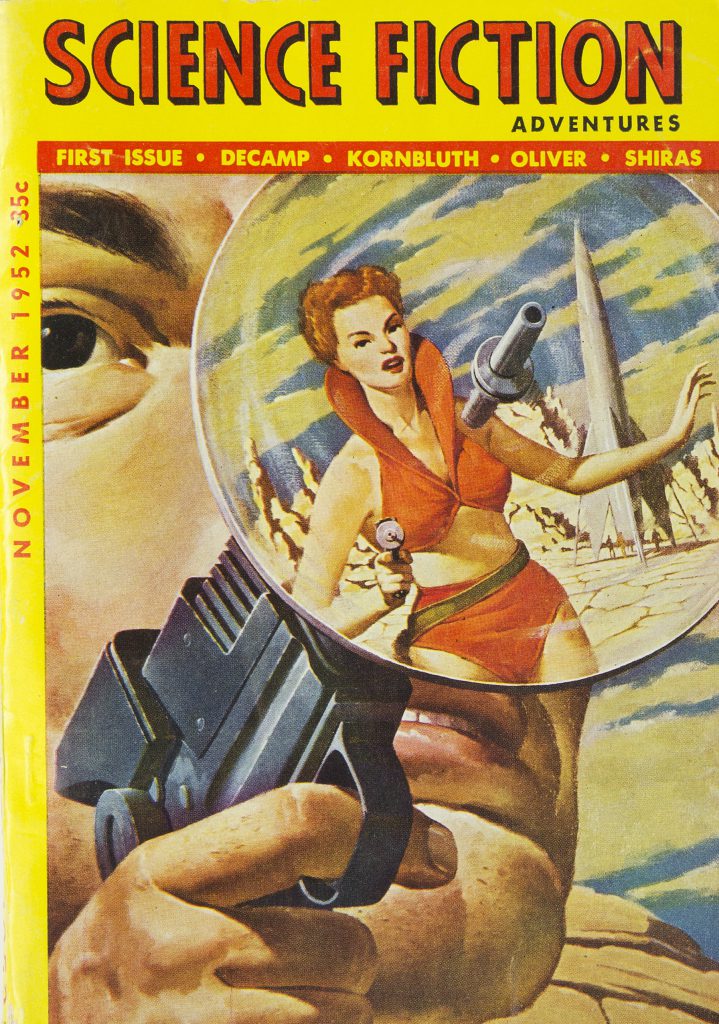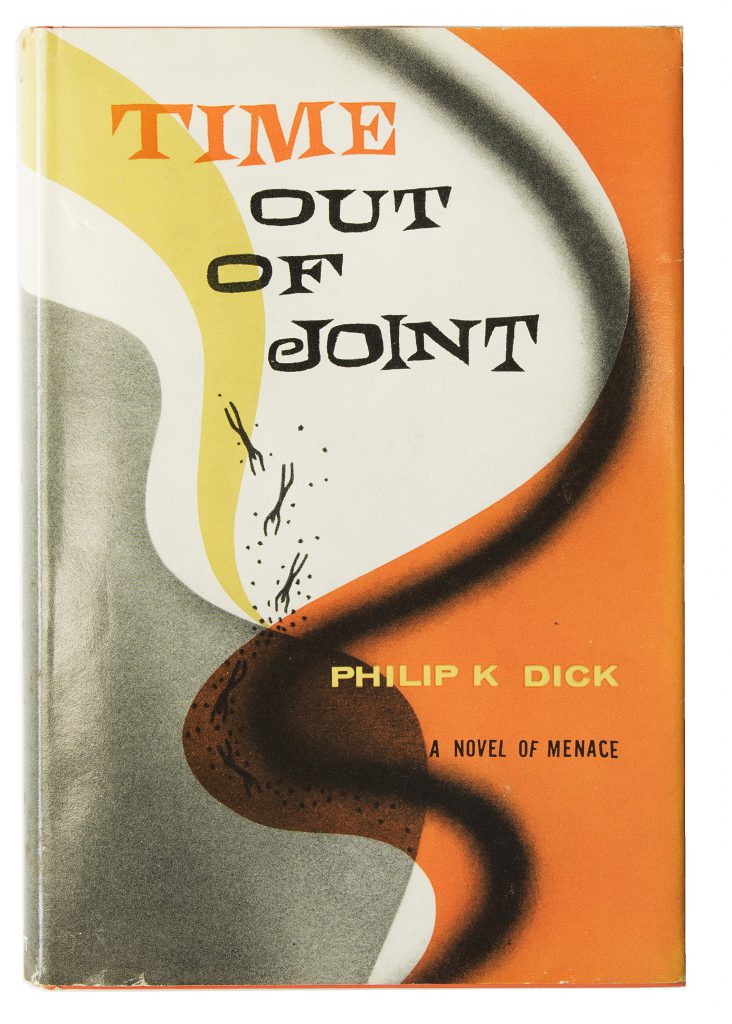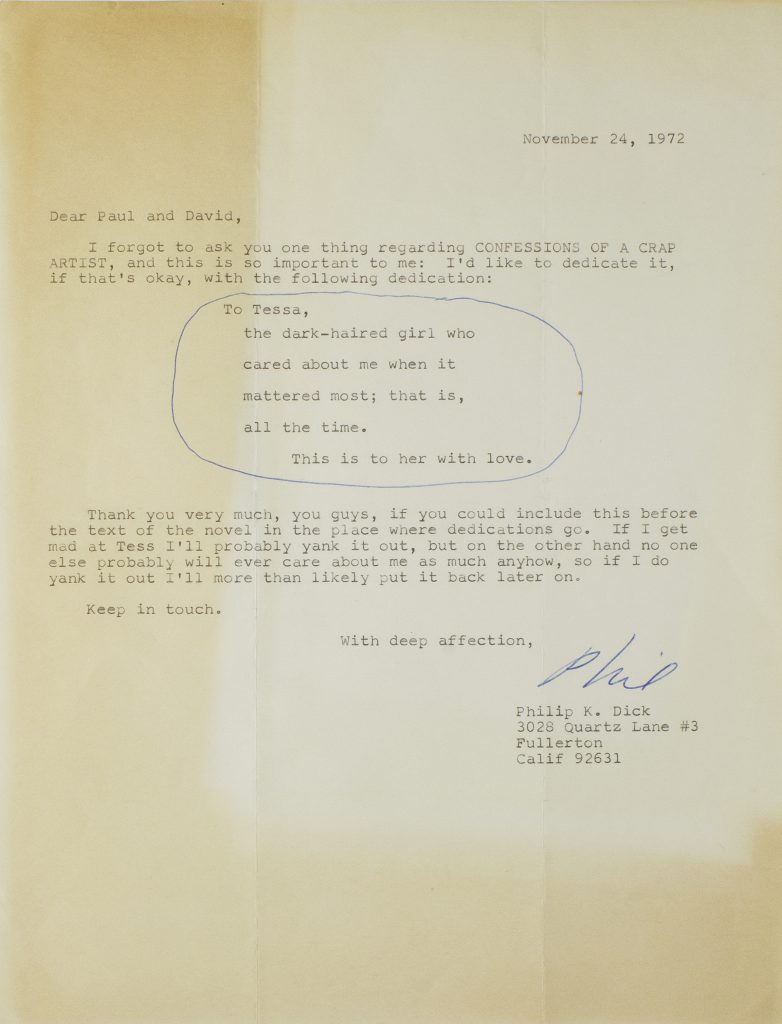Anthony Boucher. Rocket to the Morgue by H. H. Holmes. New York: Duell, Sloan & Pearce, 1942.
Anthony Boucher was the most widely used pseudonym of California writer William Anthony Parker White (1911–68), author of detective novels, science fiction and fantasy stories, and a considerable body of criticism. Rocket to the Morgue is a mystery set in the world of science fiction writing and fandom, with many portraits of his contemporaries, among them Robert A. Heinlein and editor John W. Campbell.
No. 28.
Jorge Luis Borges. “The Garden of Forking Paths,” translated by Anthony Boucher, pp. 102-110, [in:] Ellery Queen’s Mystery Magazine, United Nations Issue, Vol. 12, no. 57, August 1948.
Jorge Luis Borges (1899–1986), Argentine poet, essayist, and librarian, wrote a series of fictions that fall somewhere between miniature and fable. I admire the extreme concision and braided intricacy of his story lines, and the way books, reading, and authors seem part of the fabric of the universe. To me, the stories are unmistakably science fiction. One of his late stories, “There Are More Things,” was written in hommage to H. P. Lovecraft.
The first English-language publication of fiction, translated by author and critic Tony Boucher.
No. 29.
Jorge Luis Borges. “The Garden of Forking Paths,” translated by Anthony Boucher, pp. 102-110, [in:] Ellery Queen’s Mystery Magazine, United Nations Issue, Vol. 12, no. 57, August 1948.
Jorge Luis Borges (1899–1986), Argentine poet, essayist, and librarian, wrote a series of fictions that fall somewhere between miniature and fable. I admire the extreme concision and braided intricacy of his story lines, and the way books, reading, and authors seem part of the fabric of the universe. To me, the stories are unmistakably science fiction. One of his late stories, “There Are More Things,” was written in hommage to H. P. Lovecraft.
The first English-language publication of fiction, translated by author and critic Tony Boucher.
No. 29.
(Anthony Boucher) Magazine of Fantasy [and:] Magazine of Fantasy and Science Fiction. Vol. 1, nos. 1–2, 1949-50.
First two issues of this influential magazine, founded by Anthony Boucher and Francis J. McComas and still in publication today. The design is by George Salter.
Philip K. Dick wrote of his friend: “Tony Boucher was gone. But I am still a writer, because of him. Whenever I sit down to start a novel or a story, a bit of the memory of that man returns in me. I guess he taught me to write out of love, not out of ambition. It’s a good lesson for all activities in this world.”
No. 30.
Everett F. Bleiler, editor. The Checklist of Fantastic Literature. A Bibliography of Fantasy, Weird, and Science Fiction Books Published in the English Language. Chicago: Shasta, 1948.
The first comprehensive attempt at science fiction bibliography, by E. F. Bleiler, who later became an important editor and anthologist.
With a superb dust jacket illustration by Hannes Bok.
No. 31.
Everett F. Bleiler, editor. The Checklist of Fantastic Literature. A Bibliography of Fantasy, Weird, and Science Fiction Books Published in the English Language. Chicago: Shasta, 1948.
The first comprehensive attempt at science fiction bibliography, by E. F. Bleiler, who later became an important editor and anthologist.
No. 31.
Robert Hans van Gulik. Dee Goong An. Three Murder Cases Solved by Judge Dee. An old Chinese detective novel translated from the original Chinese with an introduction and notes. Tokyo: Printed for the author by Toppan Printing Company, 1949.
R. H. van Gulik (1910–67), Dutch diplomat and sinologist, also wrote a series of detective novels set in China of the Tang dynasty (eighth century CE). His scholarly knowledge enriched plots adapted from earlier Chinese sources, including incidents of possible supernatural origin. I include van Gulik’s Judge Dee novels among the literature of the fantastic because of his rigorous creation of an ancient China, and for his connection with Tony Boucher.
This copy was inscribed to author and critic Anthony Boucher by van Gulik when he was posted to Kuala Lumpur.
No. 32.
Robert Hans van Gulik. Dee Goong An. Three Murder Cases Solved by Judge Dee. An old Chinese detective novel translated from the original Chinese with an introduction and notes. Tokyo: Printed for the author by Toppan Printing Company, 1949.
R. H. van Gulik (1910–67), Dutch diplomat and sinologist, also wrote a series of detective novels set in China of the Tang dynasty (eighth century CE). His scholarly knowledge enriched plots adapted from earlier Chinese sources, including incidents of possible supernatural origin. I include van Gulik’s Judge Dee novels among the literature of the fantastic because of his rigorous creation of an ancient China, and for his connection with Tony Boucher.
This copy was inscribed to author and critic Anthony Boucher by van Gulik when he was posted to Kuala Lumpur.
No. 32.
Damon Knight. “Book Reviews: The Dissecting Table,” [in:] Science Fiction Adventures. Vol. I, no. 1. November 1952. New York: Science Fiction Publications, 1952.
“it means what we point to when we say it”
Author and critic Damon Knight took science fiction literature seriously and applied standards of logic, coherence, and literary technique to the books he reviewed. Knight’s statement has often been adapted or quoted in truncated form, not to mention simply misquoted. Here it appears in its original published form.
No. 33.
Damon Knight. “Book Reviews: The Dissecting Table,” [in:] Science Fiction Adventures. Vol. I, no. 1. November 1952. New York: Science Fiction Publications, 1952.
Another copy to illustrate the cover.
No. 33.
Philip K. Dick Time out of Joint. Philadelphia: J. B. Lippincott Company, 1959.
Philip K. Dick (1925-82) lived in California most of his life. He began writing short stories in the early 1950s and soon became a prolific novelist. He won the Hugo award for The Man in the High Castle (1962), about an alternate America after an Axis victory in the Second World War.
Time out of Joint is my favorite among Dick’s early novels for its detailed picture of life in the late 1950s (the world before I was born). Ragle Gumm is a layabout who lives with his married sister and drinks warm beer while he plays a newspaper contest. As national champion of Where Will the Little Green Man Be Next? Gumm earns just enough money to make his contribution to the middle-class household. His world soon falls apart and he learns that it is not 1959 but 1998, and he is Ragle Gumm, a businessman who volunteered to lead the war effort of the One World Government against a rebellious lunar colony, and who has gone insane under the pressures and contradictions of prosecuting a civil war.
No. 34.
Philip K. Dick. Typed letter, signed (“Phil”) to David G. Hartwell and Paul Williams, 24 November 1972.
This letter is the dedication page for Dick’s novel Confessions of a Crap Artist, which he wrote at about the same period as Time out of Joint, but which was not published until 1975. Biographer Lawrence Sutin called it “Phil’s first novel to put multiple narrative viewpoints to wild work.”
Dick was known chiefly in the science fiction community until 1975, when Paul Williams’ interview and profile in Rolling Stone made him a national figure. He died of a stroke in 1982, aged fifty-three, just after the release of Bladerunner, based on his 1968 novel Do Androids Dream of Electric Sheep? It was the first of many film adaptations of his work. Critic Fredric Jameson has called him “the Shakespeare of science fiction.”
No. 34.
Contents
A. Collection Statement
B. Early Works 1762-1912
C. 1920s
D. 1930s
E. 1940s & 1950s
F. 1960s & 1970s
G. 1980s & 1990s
H. Now 2000-2017
I. Bibliography
J. Women Authors
K. Signed or Inscribed

